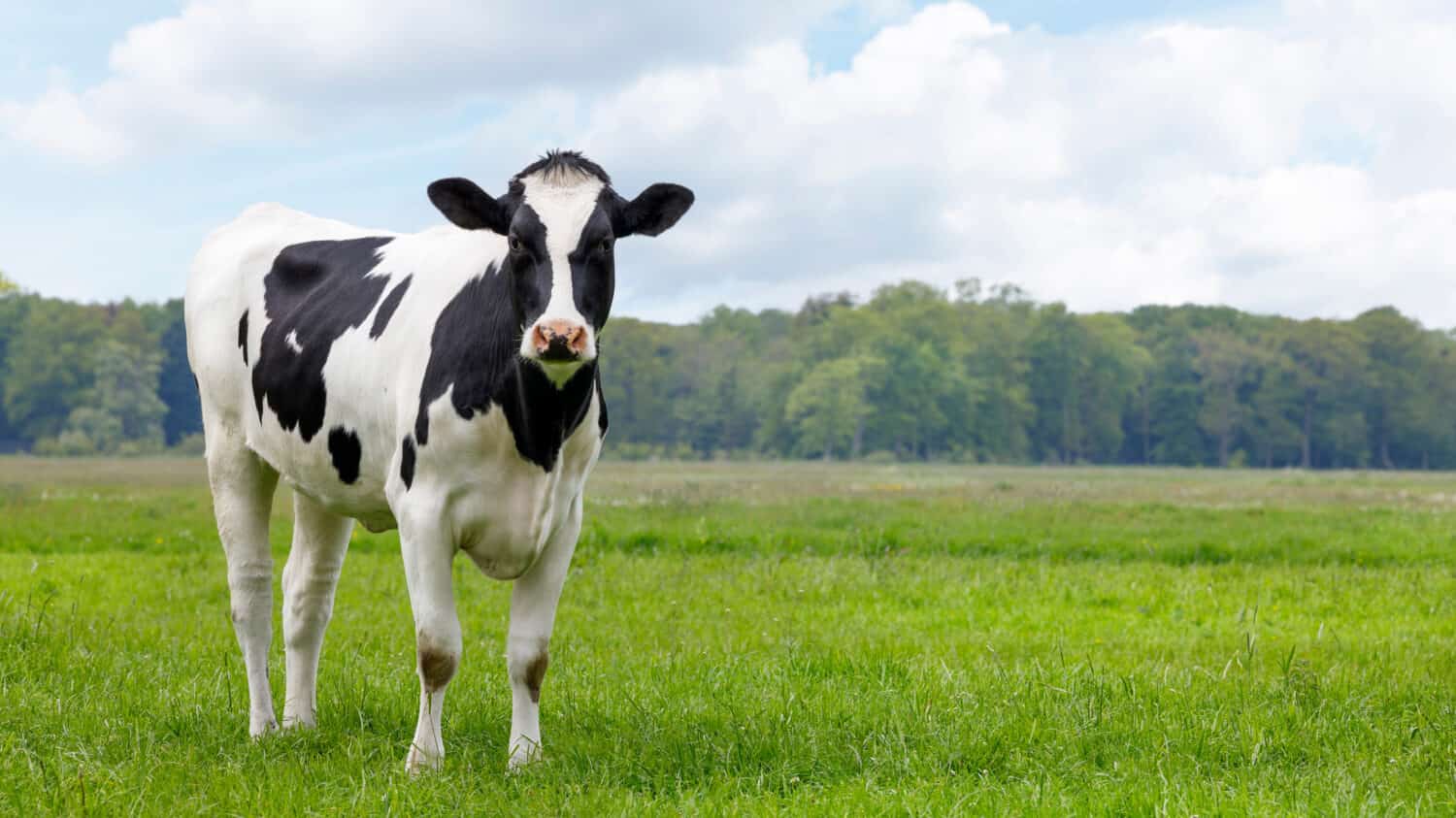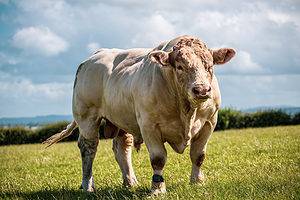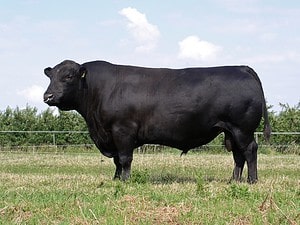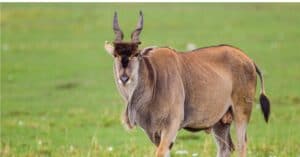It might surprise you to learn that quite a lot goes into understanding cow prices in 2024. Many factors can influence the cost of cows, such as market trends, breed, age, and more.
If you’re overwhelmed by all of this never fear. In this article, we will dive into what influences the price of cattle, as well as the additional costs of keeping these animals, and everything else you need to know about the market.
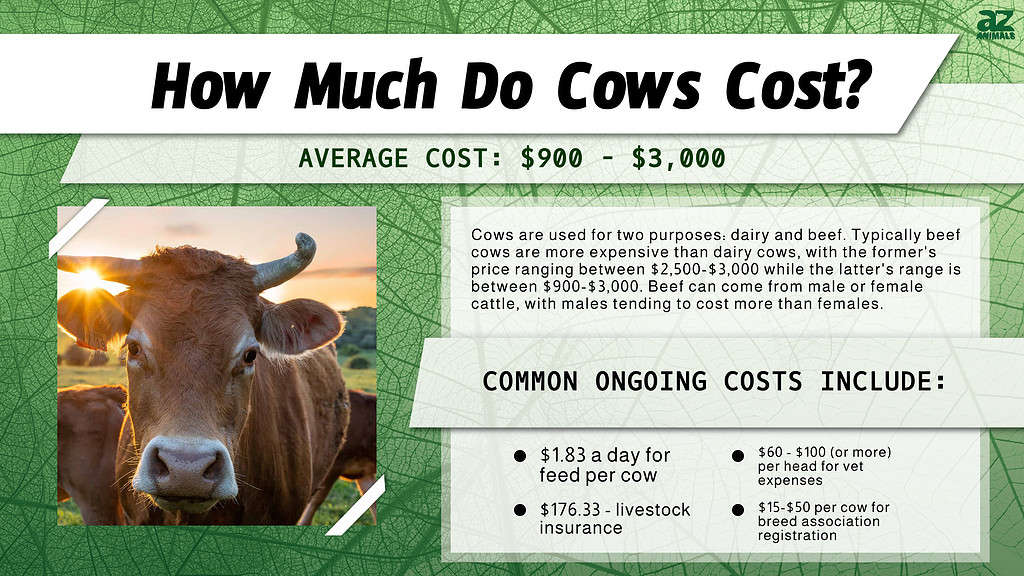
Current Market Trends
Cattle prices continue to climb in 2024, and according to some estimates may even reach record highs. It’s easy to trace the factors influencing these high prices.
Drought poses a significant problem for cattle farmers. The USDA reports that while drought conditions have improved in 2022 thru 2024, the impact still lingers for beef producers. Additionally, a “core portion of the U.S. beef herd remains under severe drought conditions in the Southern Plains.”

The impact of drought still affects beef producers.
©iStock.com/nickalbi
To add to the problem, the USDA National Agricultural Statistics Service (NASS) estimated hay stocks on farms on May 1 were lower than they had been in a decade. Low hay supplies and poor pastures, therefore may cause some farmers to be unable to retain breeding stock to rebuild their herds.
Price Range
Cattle prices are typically quoted by hundredweight, using the abbreviation cwt. (C stands for centum, aka a hundred). In 2024, fed cattle prices are expected to range from $150-$172/cwt.
Cows are used for two purposes: dairy and beef. Typically beef cows are more expensive than dairy cows, with the former’s price ranging between $2,500-$3,000 while the latter’s range is between $900-$3,000. Beef can come from male or female cattle, with males tending to cost more than females.
Calves cost less than adult cattle of either gender. However, cattle are classified as adults once they reach one year old. Young cattle between the ages of 1-5 years old are typically the most valuable.
For reference, The University of Nebraska-Lincoln writes that a “four-year-old bred cow would cost $1,150 (0% discount), a seven-year-old bred cow would cost $1,035 (10% discount), and a ten-year-old bred cow would cost $920 (20% discount).”
Factors Affecting Cow Prices
There are many factors that affect cow prices in 2024. One of the most significant is the animal’s breed and the quality of meat they produce. You’ve probably heard the names of beef lauded as the highest quality and revered by expensive restaurants. Wagyu beef, for example, is the best of the best.
As the name suggests, Wagyu beef comes from Wagyu cows, a Japanese breed that produces beef with an intense marbling and rich flavor. Wagyu cows are the most expensive in the world, with the typical price sitting around $30,000 for one cow.

Wagyu cows are the most expensive breed in the world.
©Perpis/Shutterstock.com
On the other hand, productivity is an important factor to keep in mind when considering dairy cows. A variety of breeds are used to produce dairy, but Holsteins are by far the most common thanks to the quantity of milk they produce.
As we’ve previously discussed, cows in the prime of their life fetch a higher price than older cows (or calves, which require more care.) Obviously, a healthy young cow will fetch the ideal price. In fact, under the Welfare of Animals at Markets Order 1990, it is an offense to sell cattle that are “unfit” due to infirm, disease, illness, injury, or fatigue.
Finally, genetics also play an important role in the price and value of cattle. Typically crossbred animals have more benefits, such as increased fertility, longevity, feed efficiency, disease resistance, and overall health. For this reason, crossbred cows may have greater retail value than purebred.
Regional Variations
In the vast United States, the price of cows can vary by region. The effects of drought have plagued the entire country, particularly the West and Southern Plains, which as we discussed takes a toll on the cattle industry. This seems to be driving the cattle prices slightly downward in the Southern Plains.
Market Intel reports that cash asking prices for fed cattle in the Southern Plains are holding at $158/cwt, but packers have not been willing to pay that so far. In contrast, fed cattle prices in Midwestern states such as Iowa and Nebraska, have been as high as $160/cwt.
The greatest volume of trade occurs near $158/cwt in this region. In the Midwest, prices are especially high for replacement heifers (female cows that have not borne a calf) with desirable genetics.
Purchase Considerations
If you’re thinking about buying cows, there are quite a few significant factors to consider. The first thing to decide is whether you want to buy beef or dairy cows.
Dairy cows tend to be less expensive and can be very profitable due to their milk production and the relatively high prices of dairy products. However, dairy cows require much higher levels of care.
Beef cows, while more expensive, typically require only the basics, such as health checkups and vaccination, feed, and an appropriate amount of land for them to graze. For this reason, beef cows tend to be more profitable than dairy cows, though both can be lucrative investments.
Another factor to consider is the animal’s fertility and whether or not it has been castrated. Female cows typically reach sexual maturity at around 11-15 months and can consistently rebreed until at least eight years of age.

Female cows reach sexual maturity at around 11-15 months old.
©Canetti/Shutterstock.com
Male cattle can breed after they go through puberty at around 9-12 months, though reproductive capacity increases as the animal continues to mature.
Before buying cattle, you should also check the animal’s overall health. There’s plenty to look out for that could indicate illness in cattle. For example, behavior such as a lack of appetite is a clear warning sign of a possible health problem.
Blood in the milk of lactating cows is a likely sign of udder infection, while discharge from the eyes could point to pink eye. An overly mean, stressed, or wild temperament is something else to watch out for in an animal you could potentially purchase.
Other factors, like breed sustainability, should be considered. Be sure to consult with experts such as breeders and veterinarians before making a final purchase.
Additional Costs
There are quite a few additional costs to consider apart from the price of the cow itself. Housing, fencing, and maintenance for your animals depend quite a bit on the size of your operation and whether you are breeding cattle for dairy or beef. New material for a 4,000-square-foot facility can range between $900- $2,100.
Equipment such as a working alley ($200-$400) and head gate ($500) or squeeze shoot ($3,500-$9,000) are needed for beef cows. Milking machines for around a dozen dairy cows can cost between $1,500 and $2,500. If you’re a registered breeder, expect to pay about $15-$50 per animal to register them with a breed association.

Dairy farmers use milking machines to extract milk from cows.
©OULAILAX NAKHONE/Shutterstock.com
Typically, your cows will need more than just grass from the pasture for sustenance. The estimated cost per day to feed one beef cow is $1.83. Vet expenses can range from a range of $60-100+/year for each head of cattle. The average cost per month of livestock insurance is around $176.33, but that can vary depending on your level of coverage.
Supply and Availability
As we previously discussed, the effects of drought are still being felt by cattle farmers in 2024. Along with low hay supplies, this has caused producers to slaughter cattle at higher rates. As a result, calf crops may drop in 2024 and the number of available beef cattle could decrease in 2024.
With this in mind it may be a good idea to seek out the common breeds of cows in the U.S. Angus Black cattle are very popular for beef, as are Hereford cows, which are less expensive. For producing dairy, Holstein cows are very popular
Resources and Platforms
There are several places buyers can look to purchase cows. Buying from a reputable local farm or breeder, where you can examine the animal and its place of living, is probably the best option
Cattle auctions are another way to purchase cows. You can click here to find out if there are any auctions in your area. Finally, purchasing cows from farmers online is certainly an option in the 21st century. Just be extra careful when dealing with Internet purchases and Craigslist deals.
Conclusion
The effects of drought are still being seen in the cattle industry and the price of a cow may reach record highs in 2024. Still cattle farming can be profitable, provided you have the right equipment and are willing to put in the time and work necessary.
Before purchasing a cow or other livestock, conduct thorough research, consult professionals, and consider your specific goals and requirements.
Thank you for reading! Have some feedback for us? Contact the AZ Animals editorial team.

